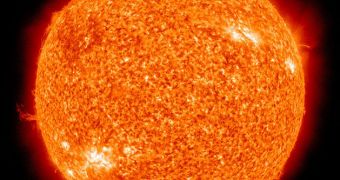Though the Sun should theoretically enter a period of increased activity called a solar maximum, experts say that the star may in fact be getting ready to become less active over the next few years. Peak solar maximum was supposed to be achieved between 2012 and 2013.
The new conclusions are based on an thorough analysis of the Sun, which revealed weakening levels of magnetic activity around the poles of the star. Fading sunspots are also an indicator that things may not be going in the previously-estimated direction.
Additionally, solar physicists say that spacecraft dedicated to monitoring events going on on the solar surface picked up some fairly uncommon readings recently, which further contribute to the new results.
Recently, these conclusions were detailed in no less than 3 separate scientific studies. The works do not dispute the fact that the star will reach its peak activity during the upcoming maximum, but rather propose that the next, 11-year cycle will be significantly less active than the current one.
In fact, the studies say, solar activity may subside entirely. This would be unusual since the current solar cycle was also marked by decreased, prolonged levels of low activity. The Sun needed two years more than usual to produce solar flares, coronal mass ejections, and other related events.
“The solar cycle may be going into a hiatus. This is highly unusual and unexpected,” expert Frank Hill said in a news briefing. The announcement was made yesterday, June 14. Hill is the associate director of the Solar Synoptic Network (SSN), at the National Solar Observatory (NSO).
“But the fact that three completely different views of the sun point in the same direction is a powerful indicator that the sunspot cycle may be going into hibernation,” he said, during the annual meeting of the Solar Physics Division of the American Astronomical Society (AAS).
“We expected to see the start of the zonal flow for Cycle 25 by now, but we see no sign of it. The flow for Cycle 25 should have appeared in 2008 or 2009. This leads us to believe that the next cycle will be very much delayed, with a minimum longer than the one we just went through,” Hill explained, quoted by Space.
According to the expert, the start of Cycle 25 could take place around 2021 or 2022, which would be considerably later than usual. If this happens at all, the cycle may be very weak, with only limited numbers of solar flares and coronal mass ejections being produced.
“A key thing to understand is that those wonderful, delicate coronal features are actually powerful, robust magnetic structures rooted in the interior of the Sun. Changes we see in the corona reflect changes deep inside the Sun,” says US Air Force coronal research program manager Richard Altrock.

 14 DAY TRIAL //
14 DAY TRIAL //